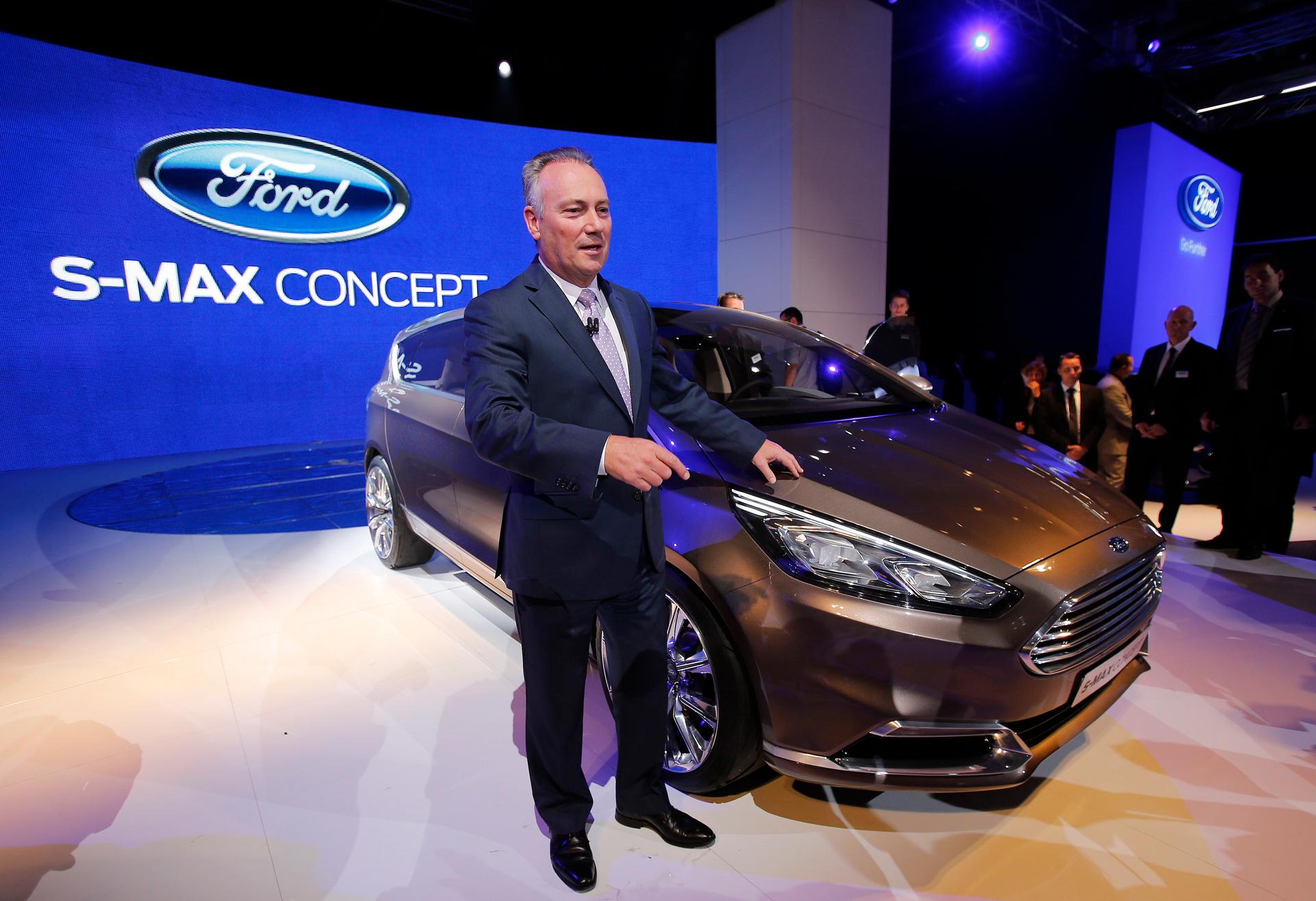Dreaming up the car of the future is an actual job — here’s how you do it
Ford of Europe CEO Steve Odell poses next to a Ford S-Max concept car during a media preview day at the 2013 Frankfurt Motor Show.
A robot car that drives itself might be closer to reality than you think.
Nowadays, the world's largest auto companies are introducing self-driving cars, vehicles that are powered by water vapor, and automobiles that glitter with touch screens and gadgets. Imagining those cars of the future is a real gig and Sheryl Connelly has it — she's the head of global consumer trends and futuring manager for Ford.
“My job is to look outside the automotive industry, which is really unusual for someone who works for a car company,” she says. “I get the opportunity to look at big picture global trends — shifts that will cause consumers to change their values, their attitudes or their behaviors.”
Connelly examines trends in social media, technology, the natural environment, economics and even politics to see what kind of changes the car of the future might need.
“As consumers become really spoiled, we expect all of the comforts that our home or office provides,” Connelly says. “Look at our connectivity. It used to be that you only spoke to or connected with people by phone, or by computer when you were sitting at a desk or laptop. But now, we expect to do many more things on the go.”
But when it comes to enabling cars with the latest technologies, Connelly says that automakers must walk a fine line. “The challenge of keeping people’s hands on the wheel, their eyes on the road, and their mind on the drive is of paramount importance,” she says.
To give people the freedom to multitask, Ford and other automakers have given vehicles Bluetooth and voice-activated technology so drivers can use personal devices and car features hands-free.
“It’s one thing to be hands-free, it’s another to be voice-activated,” Connelly says. “Let’s say that you’re coming home from the office and your briefcase is in your trunk and includes your phone. If it’s connected to SYNC, you can still ask it to make phone calls for you, you can ask it to read text messages or stream your favorite music without ever retrieving that phone.”
Connelly says Ford is also looking for ways to integrate wearable technologies and seamless payment systems like Apple Pay or Google Wallet. The car company also hopes to integrate vehicles with some form of Wi-Fi, so that as technology evolves, a vehicle can as well.
“I can’t get out of a taxicab or leave my house without visually connecting to my phone,” she says. “My mom worried about turning the oven off, I worry about making sure my phone is with me at all time. I think in the future, we’re going to be really drawn to technologies that alleviate that burden.”
This story is based on an interview from PRI's The Takeaway, a public radio program that invites you to be part of the American conversation.
Our coverage reaches millions each week, but only a small fraction of listeners contribute to sustain our program. We still need 224 more people to donate $100 or $10/monthly to unlock our $67,000 match. Will you help us get there today?
